Best Lacquer Sprayers — Buyer’s Guide, How-To, Reviews, and Comparison
With so many lacquer sprayers on the market, it can be challenging to identify the exact machine that will live up to your expectations. To achieve that flawless finish lacquer coatings are synonymous with, your new purchase should be able to handle low-viscosity mediums concerning nozzle size and variable power output. Furthermore, a choice of spray pattern and an adequately sized paint cup are desirable.
- Three spray patterns.
- Variable volume output.
- Comfortable handle.
- Control Finish tip.
- 0.85-quart paint cup.
Laquer Sprayers Comparison Table
| IMAGE | PRODUCT | DETAILS | ||
|---|---|---|---|---|
|
Best HVLP Lacquer Sprayer
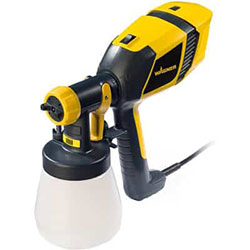
|
Best HVLP Lacquer Sprayer
|
Features
|
Check Price at Amazon Wagner Control 250 Review Wagner Control 250 Review | |
|
Best for the Money
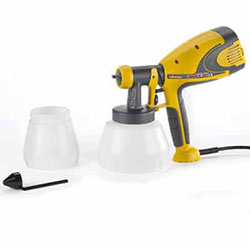
|
Best for the Money
|
Features
|
Check Price at Amazon Wagner Control Spray Double Duty Review Wagner Control Spray Double Duty Review | |
|
Best Compressor Powered Lacquer Sprayer
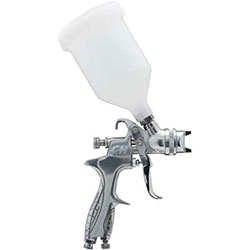
|
Best Compressor Powered Lacquer Sprayer
|
Features
|
Check Price at Amazon Campbell DH580000AV Review Campbell DH580000AV Review | |
|
Best for Accessories
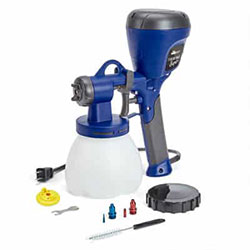
|
Best for Accessories
|
Features
|
Check Price at Amazon HomeRight Super Finish Max Review HomeRight Super Finish Max Review | |
|
Best Gravity-Fed Lacquer Sprayer
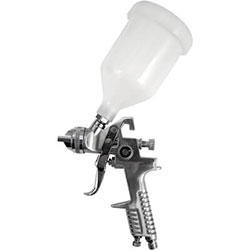
|
Best Gravity-Fed Lacquer Sprayer
|
Features
|
Check Price at Amazon Powermate 010-0032PM Review Powermate 010-0032PM Review | |
|
Best Lacquer Sprayer for DIY Use
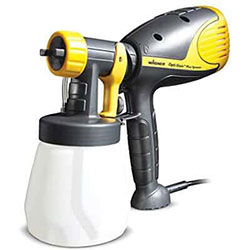
|
Best Lacquer Sprayer for DIY Use
|
Features
|
Check Price at Amazon Wagner Opti Stain Plus Review Wagner Opti Stain Plus Review | |
|
Best Airless Lacquer Sprayer
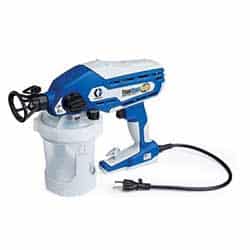
|
Best Airless Lacquer Sprayer
|
Features
|
Check Price at Amazon Graco 16Y385 Review Graco 16Y385 Review |
Lacquer Sprayers Buying Guide
- Compact size.
- Appropriately sized paint cup.
- Lacquer compatible fluid tip.
- Variable volume and pressure output.
What is Lacquer Used For?
In a nutshell, lacquer is a clear coat that dries to leave a durable layer on mainly metal and wood surfaces. Its key properties include being water-resistant yet breathable and chip-proof.
It’s less dense than traditional paints, plus it will also expand and contract the same as wood base-mediums — preventing cracks to the final finish in the long term. Furthermore, it’s available in a range of colors in addition to matte sheens and high-gloss. If you prefer the idea of the latter, you also have the added benefit that by polishing it frequently, it will maintain its glazed finish.
There are four main categories of lacquer paints:
- Nitrocellulose.
- Acrylic-lacquer.
- Catalyzed.
- Water-based.
The first is the most commonly used in household applications. However, the last on the list is gradually becoming a more popular choice. This is because it’s more eco-friendly — due to the elimination of toxic chemicals that can sometimes be found in nitrocellulose.
As lacquer is a low-viscosity medium, the benefits of using a spray gun to lay the coating are multiple — eliminating brush strokes and quick drying, to name a few.
Lacquer Sprayers — How To Choose the Best
Compressor or Turbine Driven
A unit that incorporates an inbuilt turbine will save the added expense caused by needing to purchase a separate compressor. These all-in-one lacquer spray guns are great for occasional DIYers that may not have other uses for such a machine — for example, an air hammer or a staple gun.
While initially, they may appear a little more pricey in comparison to a pneumatic gun, when you take into account the compressor unit cost, many machines with integrated motors work out less expensive in the long run.
However, if you’re a dedicated home improver with an armory of compressor-driven power tools — a gun-only package could work out the best solution for your needs.

Paint Container Capacity
Conversely, if your container is too large and you fill it to the brim, the weight of the unit as a whole will be significantly increased — leading to limb fatigue and potentially halting your progress.
Before you go ahead and purchase a spray gun for lacquer, try to discern the size of your planned projects — calculate which size container would be best for you.
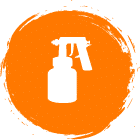
Nozzle Size
If working with a lacquer sprayer that states its capabilities using the metric system, look out for sizes between 1.4 and 1.8 mm for the best results. Alternatively, for imperial-sized machines, you have the range of anything between 0.009 and 0.015 inches to choose from.
Variable Output
Since wood-based projects can range in size, for instance, a small stool, through to a vast panoramic deck, having the possibility to vary these outputs will make all the difference to the time you spend working.
It’s also a plus if you’re new to the paint spraying game, as you’ll have the ability to go at your own pace — with no extra performance pressure (pun intended).
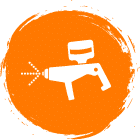
Easy to Clean
The best sprayer for lacquer will permit a complete parts breakdown and provide you with access to all those awkward, sometimes hard-to-reach places for a comprehensive cleanse.
How To Use Lacquer Sprayers
What You Will Need to Follow This Tutorial
To quote a well-known US athlete, “Good luck is a residue of preparation.” Not only is this applicable in sport, but also in paint spraying. To ensure that luck and pro-looking results stay on your side — make sure you have everything to hand before you start.
- Best spray gun for lacquer.
- Lacquer coating.
- Fan.
- Drop cloths.
- Masking tape.
- Screwdriver.
- Sandpaper.
- Tack cloth.
- Soapy water and washcloth.
- Coveralls, eye protection, and face mask.
How To Spray Lacquer on Kitchen Cabinets — Step by Step Instructions
Step 1: Preparing Your Cabinets and Workspace
- Start by removing your cabinets from situ and position them in your workshop or a well-ventilated area.
- Lacquer coatings can emit high quantities of VOC (volatile organic compounds), which could be toxic or flammable. If your workspace doesn’t have sufficient ventilation, consider opening a window and using a fan.
- Ensure that you place a drop cloth beneath the cabinets to protect the floor.
- Employ your screwdriver to remove the doors from the main body of the cabinet. Using the masking tape, secure the screws together and label. Also, remove any other fixtures such as handles, hinges, and knobs.
- Give the cabinets a thorough wipe down with soapy water to remove any built-up dirt and dust. Allow to dry completely before proceeding.
- Sand away any obvious imperfections gently and remove any dust caused by this process.
- Tape off any areas you don’t intend to coat.
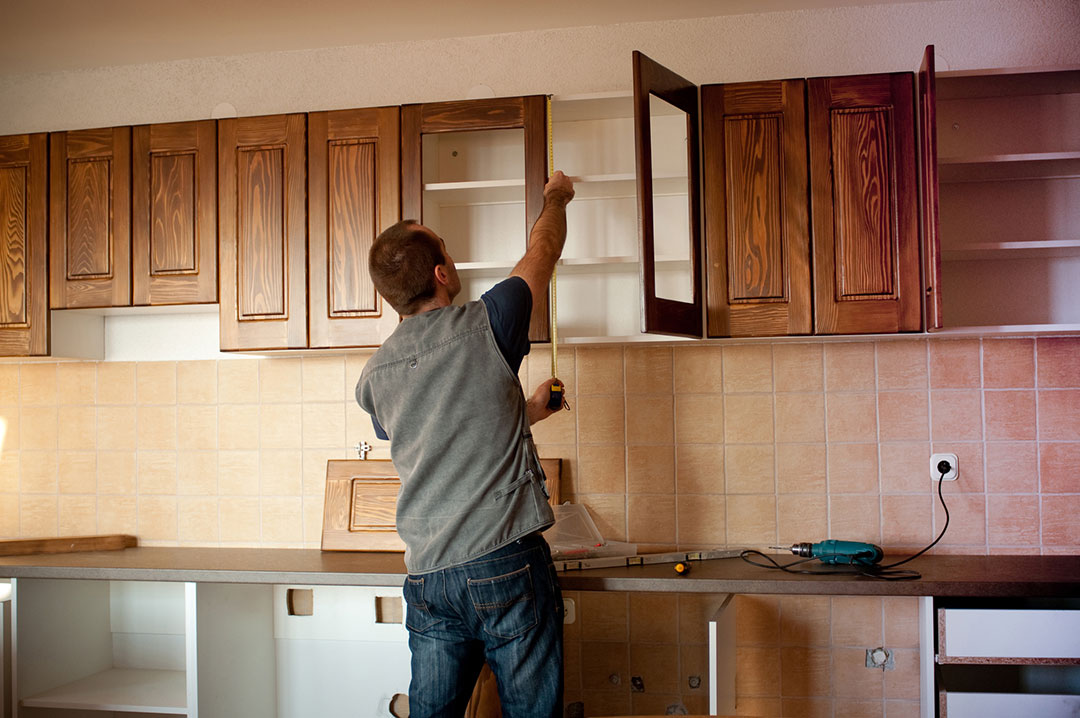
Step 2: Start Lacquering
- Put on your protective apparel and follow the manufacturer’s instructions to set up the sprayer. Ensure that you have the correct fluid nozzle installed and that any adjustable settings are fine-tuned for use with lacquer.
This information is usually found in the lacquer sprayer’s user manual or manufacturer’s website.
- Next, you want to start spraying what’s known in the industry as a grip coat. This is a very light, thin coat that will allow subsequent layers to stick to — without pooling or running, and ruining the finish.
- Hold your paint sprayer tip approximately 12 inches away from the base-medium surface and start spraying this thin coat.
Work in long, slow strokes, going with the grain of the wood (if present). Once you have completed one band, pass over it again by at least 50 percent to guarantee even coverage.
- When you have completed this all-important base layer, allow it to dry until it’s tacky to the touch. Then repeat the process with another fine film of coating — this should now stick well to the grip layer.
The drying time of lacquer tends to be rapid, so you shouldn’t have to wait too long between these processes.
- To achieve that perfect finish synonymous with lacquer, you’ll need to finely sand each layer of coating that you apply (excluding between the grip and primary coat). Make sure the medium is completely dry before sanding, so as not to destroy all your hard work. Remove any residue with the tack cloth.
- Adjust your sprayer to deliver a slightly thicker layer and repeat steps three and five again as required. Since each lacquer is unique, to determine how many coats you need to achieve your desired finish, it’s best to refer to the instructions on the back of the paint can.
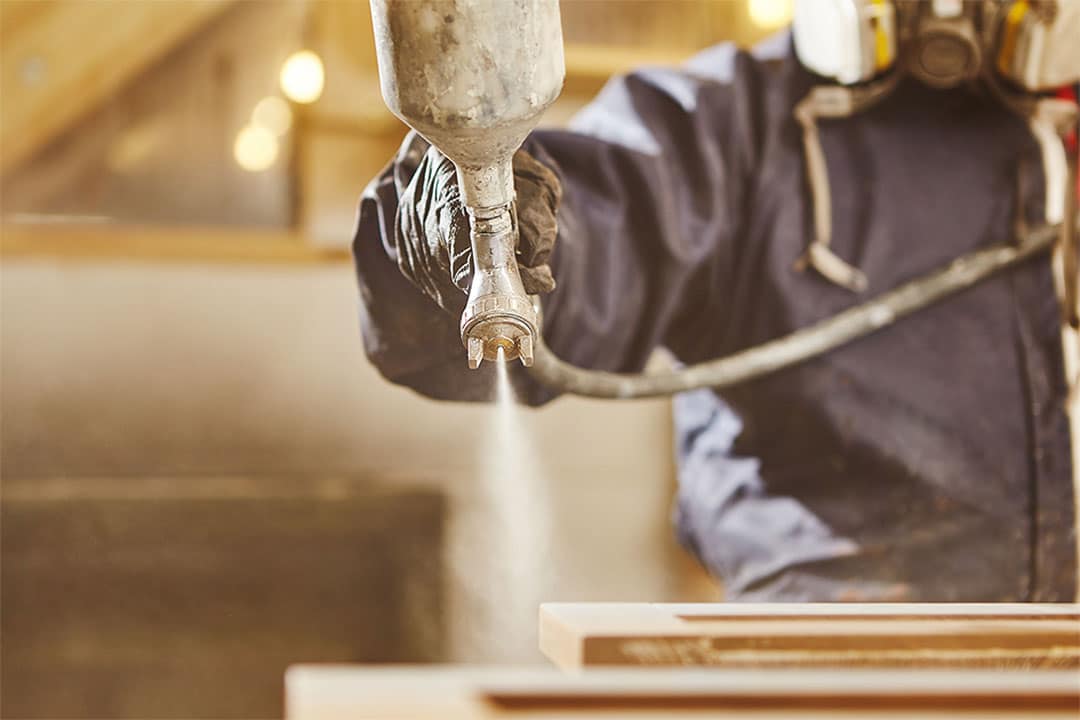
Step 3: Cleaning Up
- Once you’ve finished applying the necessary number of coats, rinse your lacquer paint sprayer meticulously. Take your time and really reach into all the corners to ensure that all the coating is eliminated.
- When the cabinets are completely dry, remove any masking tape and return to its final position — reattach any doors and finish off by reinstalling the handles and knobs.
- Tidy up the drop cloth.
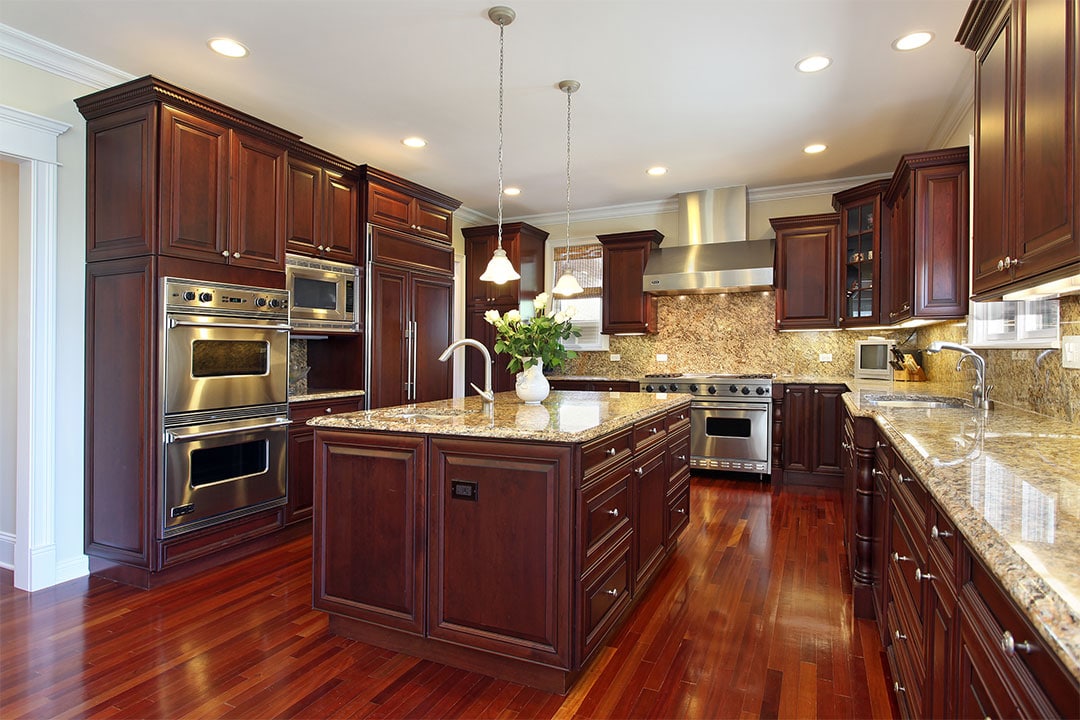
Seven Top Performing Lacquer Sprayers
To tailor this machine to your precise needs, you have the option of three spray patterns — horizontal, vertical, and round. Furthermore, variable flow output will enable you to switch between the speeds needed to put down the grip and final coats effortlessly.
Plus, this machine takes a frontline position in reducing fatigue — weighing in at only three pounds. While the ergonomically designed handle also makes for an all-around more comfortable spraying experience.
Clean-up is speedy thanks to Wagner’s proprietary Lock-N-Go system. At just one push of a button, the whole unit disassembles into easy-to-handle sections, allowing you to remove any stubborn paint fuss-free. Also, an integrated filter helps keep debris and dirt ingress away from the turbine.
Wagner SprayTech is one of the driving forces in the fluid-handling industry. Backed by seven decades of experience, all machines include an impressive warranty as standard and are backed by premium customer service.
- Lightweight unit.
- Variable flow rate of 0.33 gallons per minute (GPM).
- Lock-N-Go quick release system.
- Turbine filter.
- Control Finish fluid nozzle.
- Three spray patterns.
- Somewhat noisy.
- Design
- Functionality
- Price
Well suited to indoor and outdoor use, the two-stage turbine permits complete adjustable flow control via a conveniently situated dial — boasting enough grunt to handle small-to-medium residential tasks.
The Control Finish Nozzle adapts to three different spray patterns by a simple twist of a ring situated at its base. While the rubber-rimmed handle prevents slippage in even the most paint-covered of hands.
Two different sized paint cups — one and 1.5-quart in capacity — help you adjust between a variety of project sizes with ease. Overall, this is one easy-to-set-up and clean machine.
Hailing from the mighty Wagner SprayTech, this unit is part of the faster-than-a-brush Control Series, that aims to take the complications out of home improvement. Wagner has also bought out HomeRight, which also has a similar product line.
- Control Finish nozzle.
- Two different size paint cups.
- Viscosity cup.
- Turbine rated for indoor and outdoor use.
- Integrated filter.
- A trio of spray patterns.
- Not suited to large-scale projects.
- Design
- Functionality
- Price
Incorporating HVLP technology, it also makes this appealing to users looking to eliminate overspray.
The housing is constructed from lightweight aluminum, which helps to keep the weight in your hand to a minimum and prevents fatigue. It also permits a faster clean-up.
Additionally, the 0.63-quart coating container is amply sized for most midsize projects and negates the requirement for regular refills. While adjustable air, volume, and pattern output mean that you can modify the sprayer to your exact needs.
Campbell Hausfeld has a history of developing high-quality products since 1836 when it first manufactured agricultural equipment. Over the years, the brand has developed complete ranges of power tools and compressors — highly revered by pros and amateurs.
- 1.4 mm fluid nozzle.
- 4 CFM at 40 PSI.
- HVLP technology.
- 0.63-quart paint cup.
- Variable pattern, volume, and pressure output.
- Not the best laquer sprayer for large-scale projects.
- Design
- Functionality
- Price
The convenient material dial controls the rate of output, while by a quick twist of one of the two included caps, you have the choice of a trio of spray patterns — round, vertical and horizontal.
To further enhance the user-friendliness of this unit, the three brass fluid nozzles are color-coded — the 1.5 mm is blue, 2.0 mm is green and the larger 4.0 mm is red — minimizing on-the-job mix-ups when switching between them. The 1.25-quart paint cup is also adequately sized for an assortment of project sizes.
Cranking out an impressive 450 watts of power, this device has no problem finely atomizing oil or water-based mediums. Additionally, it’s also accompanied by a wrench, cleaning brush, container lid, and instruction manual.
HomeRight is a subsidiary company of Wagner SprayTech and is an accessible line angled toward DIY use. This sprayer is the flagship of the Finish Max HVLP series which aims to be competitively priced and easy to use.
- Three different size brass fluid tips.
- Two spray caps.
- 1.25-quart paint container with lid.
- HVLP system.
- Adjustable spray patterns and volume output.
- Arrives with a gun wrench, cleaning brush, and user manual.
- Unsuitable for expansive tasks.
- Design
- Functionality
- Price
Gravity-fed lacquer sprayers, in particular, the Powermate 010-0032PM deliver the utmost in balance and atomization. What’s more, it only necessitates a low-powered home compressor — just 2.4 CFM at 40 PSI.
Including an extremely competitive price point, it’s also lightweight and simple to operate — making it ideal for newbie home-improvers. And, the included 1.4 mm fluid nozzle is spot on for use with lacquers, in addition to enamels and stains.
A one-quart paint container is suitably sized for a range of applications, while HVLP technology reduces overspray — permitting greater control and less paint wastage.
Coleman Powermate produces a range of power tools, including pressure washers, compressors, and a wide variety of necessary accessories. With over four decades of experience, it’s a top choice among weekend warriors and productivity-focused contractors.
- One-quart paint container.
- Gravity-fed HVLP system.
- 1.4 mm fluid tip.
- Only requires 2.4 CFM at 40 PSI.
- QCS connection.
- Locating spare parts could be challenging — model is discontinued.
- Design
- Functionality
- Price
A blemish-free finish is easy to achieve with Wagner’s proprietary Control Finish Nozzle, and when you need to switch between patterns, a quick twist of the cap ears is all that’s required.
Conveniently, the volume control dial is situated near the trigger for practicality. While the entire unit is composed of robust ABS plastic — offering protection from inevitable job-site bumps.
The included six-foot power cord provides ample reach around the majority of tasks. While end-of-day clean-up is fast-tracked with the Lock-N-Go assembly system, which permits a full parts breakdown at the push of a button.
Minneapolis-based Wagner SprayTech is backed by over seven decades of experience and is one of the front runners in the fluid-handling industry. This company is well-known for innovative, affordable solutions for both pros and occasional users.
- Lock-N-Go system.
- Handheld HVLP unit.
- Control Finish spray tip.
- 0.86-quart paint cup.
- Volume control dial.
- Turbine power output is not variable.
- Design
- Functionality
- Price
The VacuValve technology permits operation at a 360-degree orientation — handy when you need to get to all those hard-to-reach places. While the FlexLiner bag system is an eco-friendly solution — the paint bags can be reused or recycled as required.
As the sprayer weighs in at only four pounds, this is a truly lightweight option — keeping ‘painter’s arm’ fatigue at bay and allowing you to work for longer. Plus, a decent flow rate of 0.20 gallons per minute helps to maximize job productivity.
Graco Inc. boasts over a century of experience when it comes to dealing with liquids under pressure. The brand’s stylish yet functional machines come in a wide choice of models — something to fit every consumer’s needs.
- Handheld airless unit.
- 515 fluid nozzle.
- Multi-angle spraying capability.
- Two one-quart FlexLiner paint bags.
- 1500 PSI operating pressure.
- Power cord is a bit on the short side.
- Design
- Functionality
- Price
Conclusion
The ideal unit will be multifaceted but as a minimum should include an appropriately sized fluid tip and a paint cup that will hold enough medium to prevent frequent refilling. Furthermore, a level of adjustability in terms of power and volume output is a must.
Preferably, HVLP technology will provide the best coverage with a minimum of mess. That said, don’t write off airless sprayers altogether — there are some super suitable units with this technology out there.
Parting comments?
Lacquer sprayers open up avenues that you never believed were possible when it comes to fluid-handling technology.
Lacquer Sprayers FAQs
Q: What Is the Best Sprayer for Lacquer?
Personally, the Wagner Control Spray 250 is one of the best performing lacquer sprayers you will find on the market. It employs HVLP technology to lay down perfect coverage and also offers a choice of three spray patterns.
Q: Can You Spray Lacquer With an Airless Sprayer?
You sure can. However, if you aren’t sure where to get started, check out my handy how-to guide above.
Q: What Is the Best Way To Apply Lacquer?
While it’s possible to apply lacquer finishes with a brush or a roller, it will take significantly longer than with a lacquer spray gun. It’s also not always possible to eliminate traces of the roller or brush in the final result. Hence, the best way to apply lacquer, in my opinion, is with a paint sprayer.
Q: Is Spraying Lacquer Dangerous?
Admittedly, some fumes are emitted when working with lacquer coatings. However, providing your workspace is well ventilated and you’re wearing the correct protective gear — a face mask and eye goggles, this danger can be eliminated.
Q: Do I Need To Thin Lacquer?
As lacquer falls to the low end of the viscosity scale, the majority of spray guns will handle this coating without the need for arduous thinning. However, for the most accurate advice, check the individual manufacturer’s user manual.
